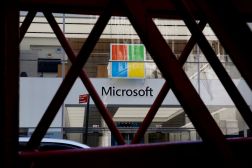Microsoft Patch Tuesday addresses 81 vulnerabilities, none actively exploited

Microsoft addressed 81 vulnerabilities affecting its enterprise products and underlying Windows systems, but none have been actively exploited, the company said in its latest security update.
The company’s monthly bundle of patches includes one high-severity vulnerability and eight critical defects, including three designated as more likely to be exploited.
The most severe defect disclosed this month — CVE-2025-55232 — is a deserialization of untrusted data vulnerability affecting Microsoft High Performance Compute Pack with a CVSS rating of 9.8. Microsoft said exploitation is less likely, but researchers warned organizations to prioritize patching.
“A remote, unauthenticated attacker could achieve code execution on affected systems without user interaction, which makes this potentially wormable between systems with the HPC pack installed,” Dustin Childs, head of threat awareness at Trend Micro’s Zero Day Initiative, said in a blog post.
Childs noted that Microsoft has disclosed about 100 more vulnerabilities at this point in the year than it did in 2024. “We’ll see if this level of patches remains high throughout the rest of the year,” he added.
Of the critical defects addressed this month, researchers are particularly concerned about CVE-2025-54918 and CVE-2025-55234 — elevation of privilege vulnerabilities with 8.8 CVSS ratings. While not actively exploited, Microsoft said exploitation is more likely for both of the improper authentication defects.
CVE-2025-55234 affects the Windows Server Message Block protocol, allowing hackers to perform relay attacks and subject users to elevation of privilege attacks. Proof-of-concept exploit code exists for this defect, according to Action1, but exploitation requires user interaction and network access.
“At its core, the vulnerability exists because SMB sessions can be established without properly validating the authentication context when key hardening measures, such as SMB signing and extended protection for authentication, are not in place,” Mike Walters, president and co-founder of Action1, said in an email.
“The potential impact is massive,” he added. “Virtually all medium to large enterprises that rely on Active Directory and Windows Server infrastructure could be affected, which amounts to hundreds of thousands of organizations worldwide.”
CVE-2025-54918 affects Windows New Technology LAN Manager (NTLM), which are security protocols for user identity authentication. “This privilege escalation allows an authenticated threat actor to escalate to SYSTEM on affected systems over the network,” Childs said.
“While not a scope change, going from a standard Windows user to SYSTEM is handy. Microsoft also notes that exploit complexity is low, so expect to see threat actors target this one,” he added.
Alex Vovk, CEO and co-founder of Action1, said the defect allows attackers to bypass and potentially undermine security controls, presenting substantial risk in sophisticated attack scenarios. “After compromising one system, attackers could use it to move laterally through networks with elevated access,” Vovk said.
“Threat actors could exploit it to deploy ransomware across multiple systems. Its high confidentiality impact means it could be used in sophisticated data theft operations,” he added. “The elevated privileges gained could also allow attackers to install backdoors or establish persistent access.”
Microsoft flagged eight defects as more likely to be exploited this month, including three that affected the Windows Kernel. The full list of vulnerabilities addressed this month is available in Microsoft’s Security Response Center.





